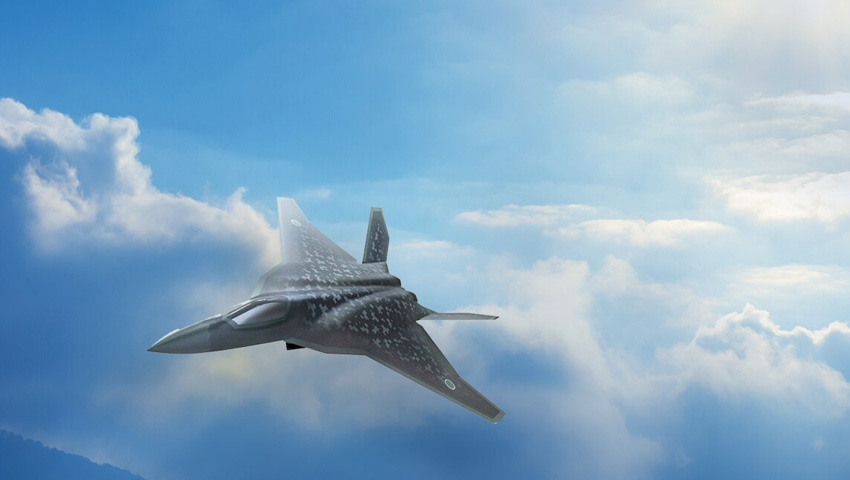With mounting regional tensions, Japan has revealed more details on the nation’s in-development, next-generation fighter aircraft, with Mitsubishi Heavy Industries the lead contractor and international collaboration on the table once again.
To continue reading the rest of this article, please log in.
Create free account to get unlimited news articles and more!
The current global and regional transition from fourth to fifth-generation fighter aircraft, like the F-22 Raptor and F-35 Joint Strike Fighter platforms, is reshaping the role of fighter fleets and the balance of power in the Indo-Pacific region.
Designed to establish and maintain air superiority or air dominance, fighter aircraft have evolved from relatively simple wood and canvas airframes during the First World War to the highly manoeuvrable long-range aircraft that dominated the skies of Europe and the Pacific during the Second World War.
The latest two generations of fighters are the pinnacle of these earlier designs.
Driven largely by advances in the capabilities fielded by both a resurgent Russia and a rising China, both of whom are increasingly eager to exercise their influence over strategically vital areas, like the East and South China Seas in particular – Japan has sought to respond with a combination of the F-35 and a domestically produced sixth-generation air superiority fighter.
In recognising these challenges, the Japanese government has long committed itself to developing a comparable fighter capability, with a focus on air superiority and exceptionally long-range – in response developing the X-2 Shinshin concept design, drawing on design cues from the Lockheed Martin F-22 Raptor.
It is envisaged that Japan’s next-generation fighter, now named the F-X, will fill the role of the retiring F-15J air superiority fighter aircraft currently operated by the Japan Air Self-Defense Force (JASDF), with the F-35A and B variants providing the low-end air-combat capabilities currently assigned to the F-16-based F-2 aircraft.
As the regional balance of power continues to shift and the dynamics evolve, the Japanese government has moved to redouble its efforts and bring forward the development and introduction of the proposed F-X fighter aircraft.
The Japanese government has awarded Mitsubishi Heavy Industries (MHI) the lucrative contract to develop the aircraft, with prototype flights expected by 2028 and full-scale production expected to begin by 2030-31.
MHI has a long history of providing Japan with cutting edge defence capability, dating back to the carrier-borne, A6M-Zero fighter which dominated the Pacific during the early years of the Pacific War and more recently the Type 10 Main Battle Tank and the Japanese Maritime Self Defense Force's (JMSDF) Soryu Class submarines.
The company has a history of collaboration with American aerospace companies, with long-held collaboration with Lockheed Martin and Boeing to support the local manufacture and sustainment of the F-16-based F-2 and F-15J aircraft.
Japan also plays a critical role in the global F-35 Joint Strike Fighter supply chain and is the largest global customer of the fifth-generation aircraft after the US, acquiring both F-35A and F-35B variants of the platform.
This collaboration has paved the way for renewed collaboration, despite Japanese government assurances that the F-X would be solely an indigenous design, with collaboration with American companies seemingly back on the agenda, combined with enhanced collaboration with the British, who are currently developing their own next-generation fighter, the Tempest.
Starting to get a clearer picture
From the outset, the Japanese government has insisted that the proposed fighter incorporate a stealthy design, and emphasised interoperability with American fighter jets, including both the F-22 and F-35. However, like the F-22, the Japanese have insisted on the future fighter having a single priority: air-to-air combat.
Additionally, the Japanese government has prioritised long-range, which will help the F-X fly from bases nearer to central Japan and still face off against Chinese warplanes operating in and around the East China Sea. The fighter will be capable of directing up to three “loyal wingman” combat drones – similar to those currently under development by Australia.
As part of the joint Japanese-UK collaboration, it is expected that the fighter will likely be armed with the Joint New Air to Air Missile, which is expected to combine the built-in advanced radar seeker of Japan’s AAM-4B medium-range, air-to-air missile with the ramjet engine of the UK’s Meteor missile.
The F-X may not carry a gun, as Japan doesn't domestically produce an aircraft-mounted gun, although MHI could license the GAU-22 25mm Gatling gun mounted on the F-35 fighter.
Additional payloads include the American Long Range Anti-Ship Missile (LRASM), the Joint Air to Surface Standoff Missile-Extended Range (JASSM-ER), and currently in-development hypersonic air-to-ground weapons.
Yours thoughts
The increasingly challenging operating environment emerging on Australia’s doorstep – combined with similar concerns developing among allies, including the US, UK and, more broadly, the European Union – raises questions about the Royal Australian Air Force’s plans to adequately defend Australia’s airspace against increasingly capable threats.
Accordingly, is it time for Australia to be involved with the development and introduction of a highly capable, high-speed, low-observable, air superiority-focused platform to complement the low-end capability of other platforms, future-proofing the capability and enhancing the interoperability of the Royal Australian Air Force and allied air forces?
For Australia, the future operating environment to the nation’s immediate north will necessitate investment in a highly capable, long-range, air dominance fighter aircraft to complement the F-35 Joint Strike Fighters and replace the ageing F-18 E/F Super Hornets by the mid 2030s.
Get involved with the discussion and let us know your thoughts in the comments section below, or get in touch with
Stephen Kuper
Steve has an extensive career across government, defence industry and advocacy, having previously worked for cabinet ministers at both Federal and State levels.

 Login
Login








